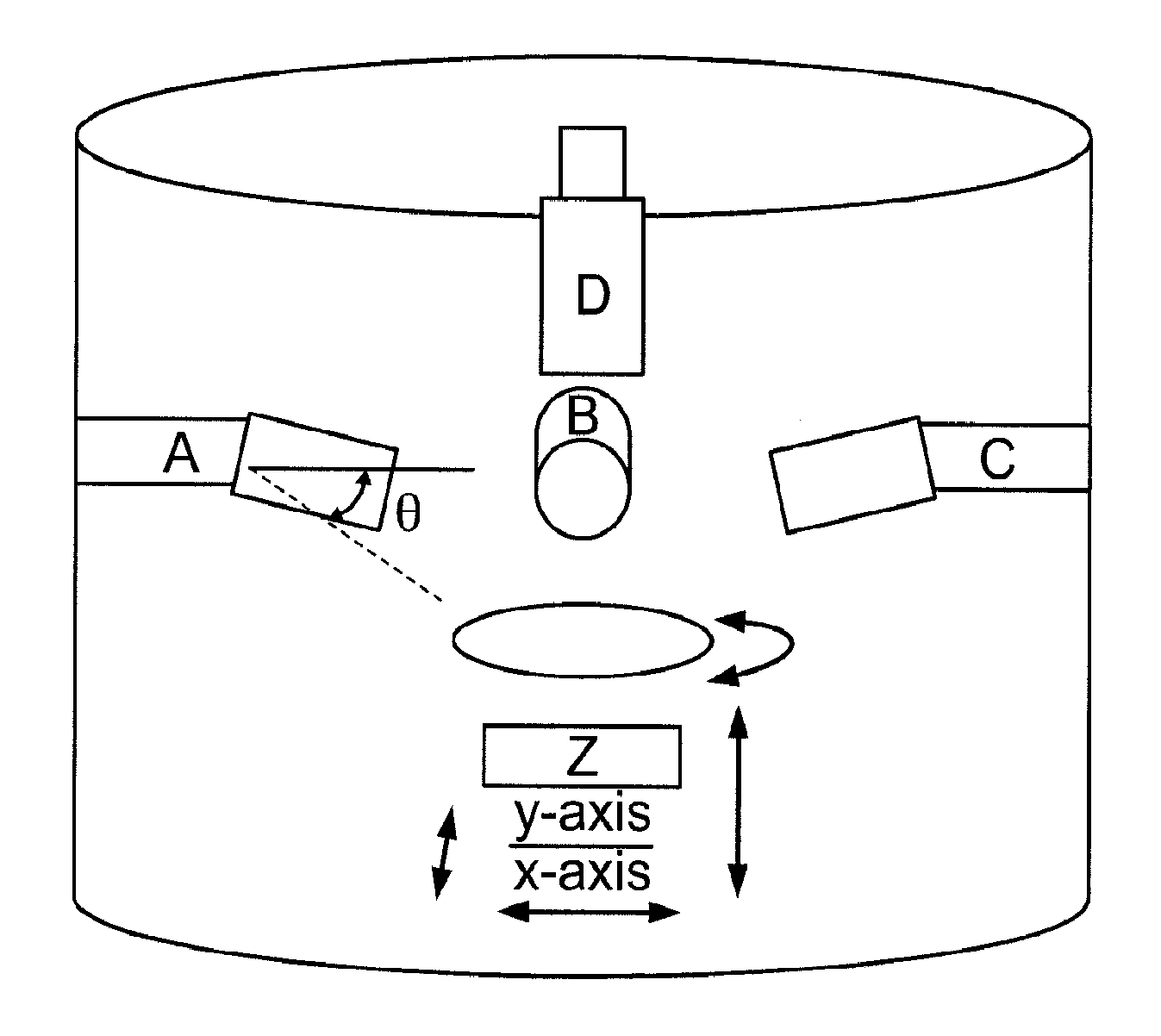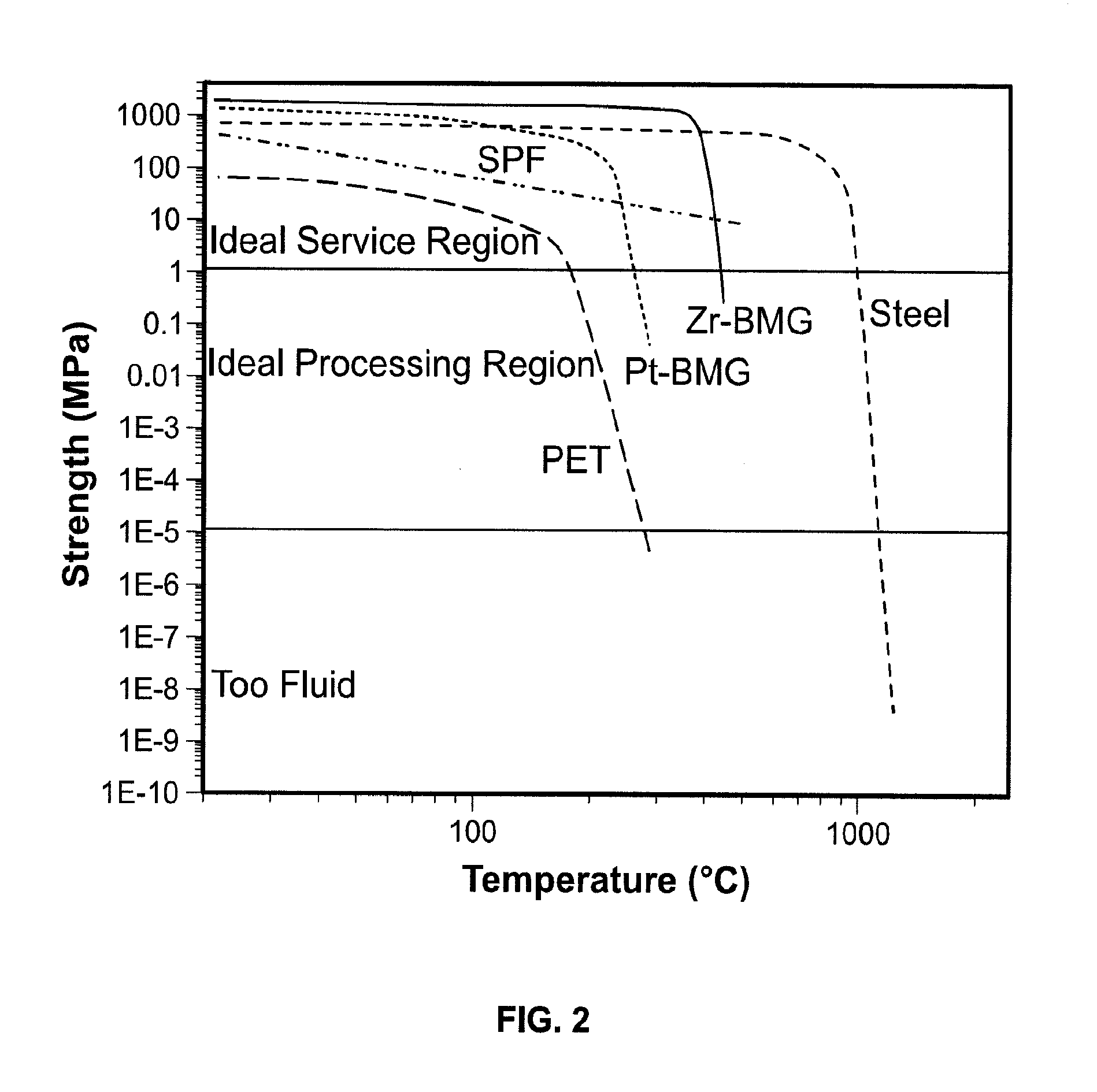Bulk metallic glass nanowires for use in energy conversion and storage devices
a technology of energy conversion and storage devices, which is applied in the direction of physical/chemical process catalysts, cell components, electrochemical generators, etc., can solve the problems of loss of electrochemical active surface area, poor performance and durability of pt/c catalysts, etc., and achieve high-performance nanowire catalysts, advantageous electrocatalytic functions, and high-performance nanowires
- Summary
- Abstract
- Description
- Claims
- Application Information
AI Technical Summary
Benefits of technology
Problems solved by technology
Method used
Image
Examples
Embodiment Construction
)
[0043]Nature often utilizes topography to control a vast range of properties through controlled hierarchy of the surface structures. Some examples include gecko feet, sharkskin, and lotus flowers where the superposition of patterns of at least two length scales dramatically effect adhesion, drag and wetting, respectively [35]. In this instance, surface topography is used by nature as a surface engineering tool to control the chemistry of the surface. Unlike semiconductors and polymers, applying effective patterning techniques to bulk metals is challenging due to their more demanding process requirements.
[0044]Conventional bulk metals are generally either processed in their (low viscosity) liquid state or in their high strength solid state (FIG. 2). Alternative techniques based on selective surface modifications, such as dealloying, have been explored as a patterning method [36-39]. This approach has, however, limited control over the dimensions and accuracy of patterns compared to ...
PUM
| Property | Measurement | Unit |
|---|---|---|
| diameter | aaaaa | aaaaa |
| yield strengths | aaaaa | aaaaa |
| diameter | aaaaa | aaaaa |
Abstract
Description
Claims
Application Information
 Login to View More
Login to View More - R&D
- Intellectual Property
- Life Sciences
- Materials
- Tech Scout
- Unparalleled Data Quality
- Higher Quality Content
- 60% Fewer Hallucinations
Browse by: Latest US Patents, China's latest patents, Technical Efficacy Thesaurus, Application Domain, Technology Topic, Popular Technical Reports.
© 2025 PatSnap. All rights reserved.Legal|Privacy policy|Modern Slavery Act Transparency Statement|Sitemap|About US| Contact US: help@patsnap.com



